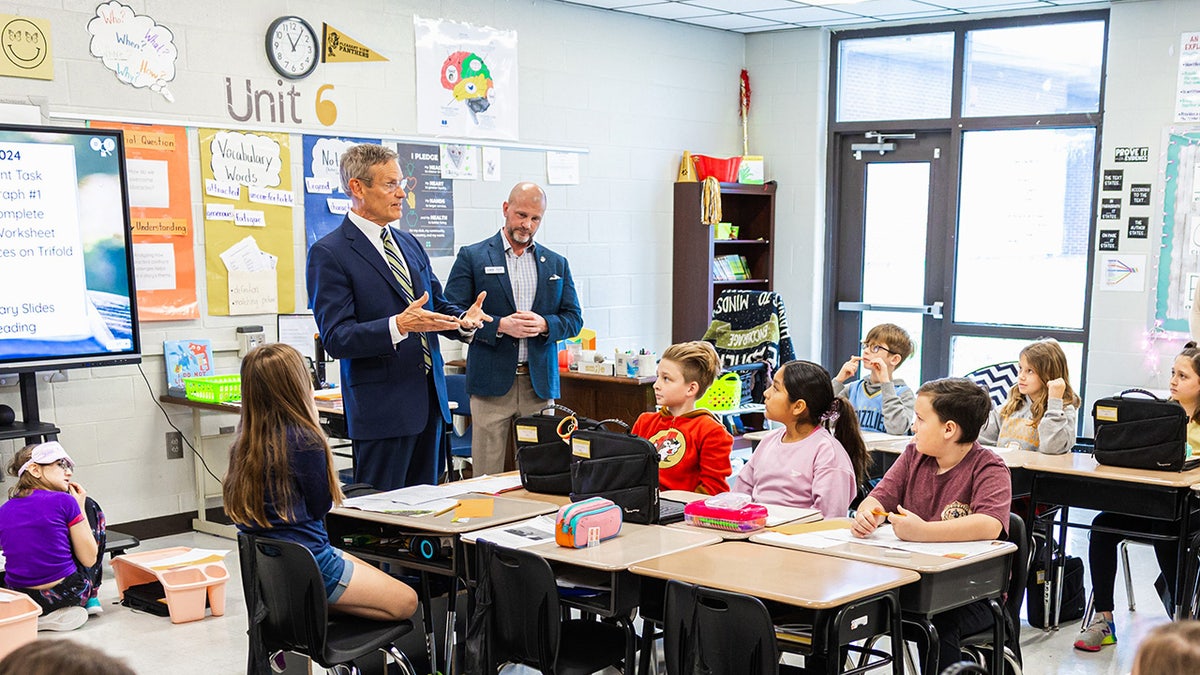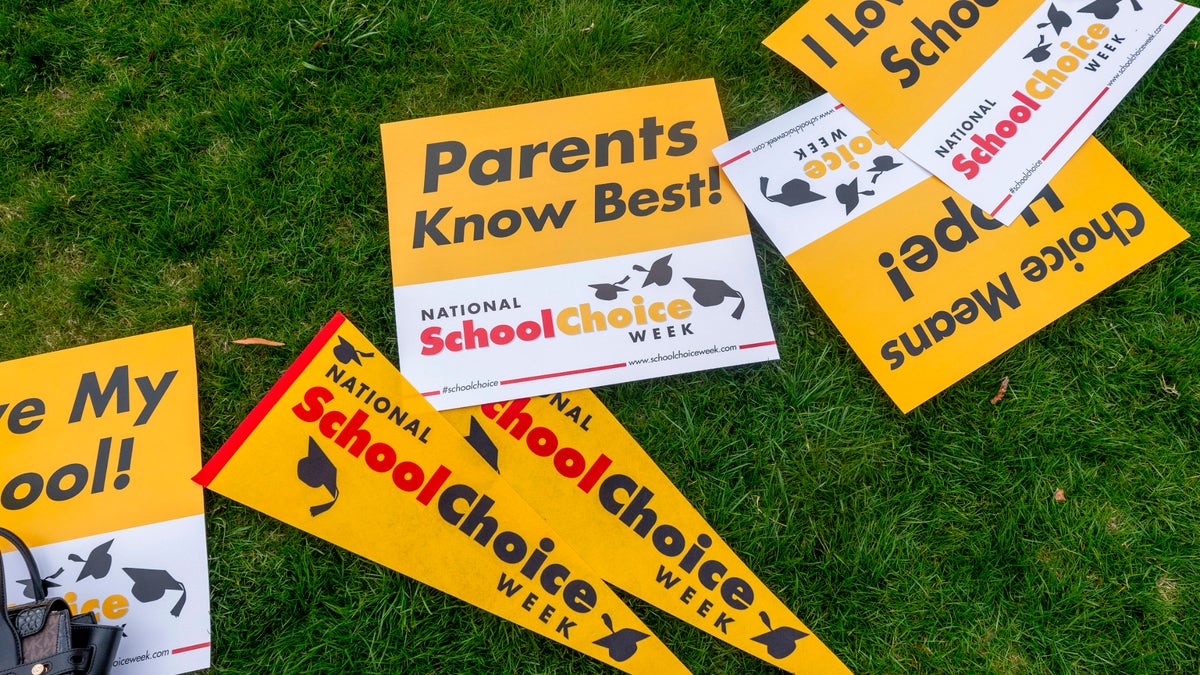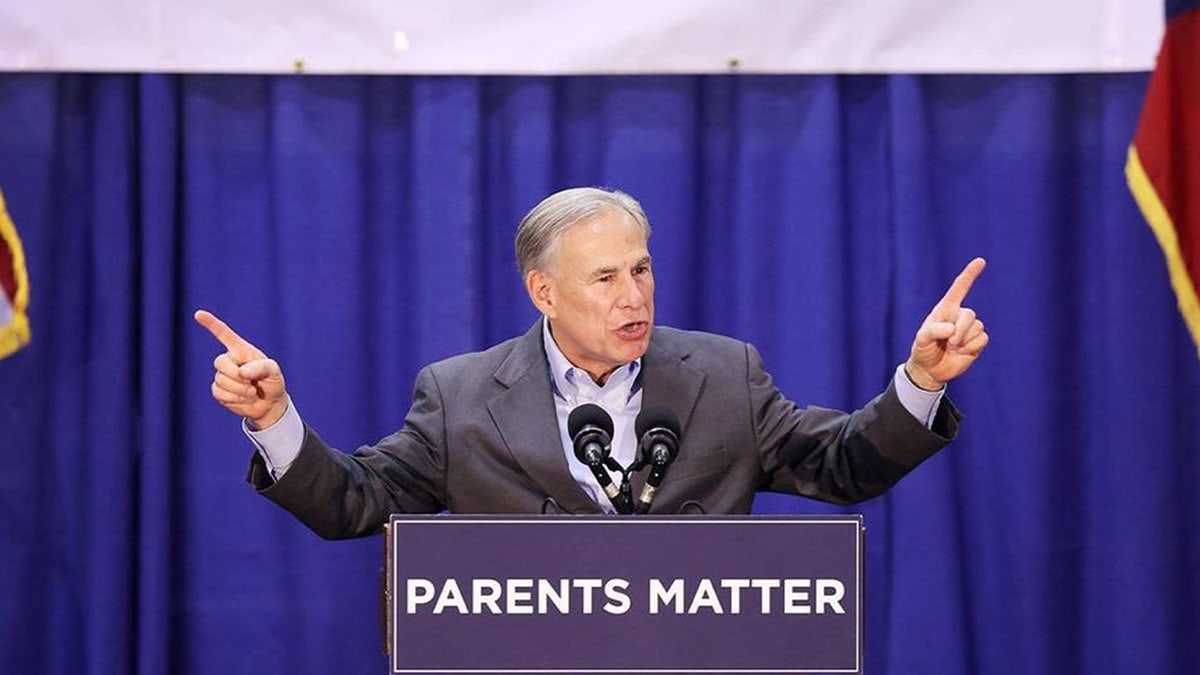The U.S. Supreme Court will consider the establishment of the nation’s first religious charter school next week, a case that could have key implications for school choice across the country.
A huge majority of states have implemented some form of school choice in recent years, but only a little more than a dozen have adopted programs that make private school choice universally available to K-12 students.
Here is the full list and a timeline of the school choice movement in recent years.
TENNESSEE AG OPTIMISTIC ABOUT SCOTUS CASE AFTER ‘RADICAL GENDER IDEOLOGY’ REVERSAL IN LOWER COURT
Alabama
Alabama passed its CHOOSE Act in 2024, which establishes an education savings account (ESA) that will soon be open to all families in the state.
Arizona
Arizona became the first state to offer universal school choice for all families in 2022, launching an $800 million program that gives parents $7,000 to put toward their children’s tuition.
Arkansas
Arkansas’s S.B. 294 established choice programs open to all students, regardless of income or disability status.
The accounts allow families to spend state money not just on tuition but also on other approved expenses, such as tutoring, online courses and instructional materials.

Florida
Florida’s H.B. 1, passed in 2023, established choice programs open to all students, regardless of income or disability status.
The accounts allow families to spend state money not just on tuition but also on other approved expenses, such as tutoring, online courses and instructional materials.
Idaho
Idaho launched its first private school choice program through a refundable tax credit. Families can receive up to $5,000 per child for private educational expenses, with $7,500 available for students with disabilities. The program is capped at $50 million annually and prioritizes families earning up to 300% of the federal poverty level (about $96,450 for a family of four).
SUPREME COURT TO DECIDE IF FAMILIES CAN OPT OUT OF READING LGBTQ BOOKS IN THE CLASSROOM
Iowa
Iowa’s H.F. 68, passed in 2023, established choice programs open to all students, regardless of income or disability status.
The accounts allow families to spend state money not just on tuition but also on other approved expenses, such as tutoring, online courses and instructional materials.
Indiana
The Indiana Choice Scholarship Program grants a voucher to qualifying K-12 students that they can put toward private school tuition.
In order to qualify, students must be residents of Indiana and a member of a household that makes an “annual income of not more than 400% of the amount to qualify for the federal free and reduced price lunch program.”

Montana
Montana has two major school choice programs, but only one of them is universally available. The more restricted program is a standard ESA, but students must have special needs or have some other form of disability in order to qualify.
The more expansive program is a statewide tax credit scholarship program that “allows individuals and corporations to claim a 100% tax credit for contributions to approved Student Scholarship Organizations,” according to EdChoice.
The average scholarship value for participating students is $2,190.
North Carolina
North Carolina has a major voucher program that is available to all students across the state, but is limited by a budget cap.
Qualifying students will get an average voucher value of $5,701 to put toward private school tuition costs, transportation, equipment or other costs associated with attending school.
After baseline qualifications are met, vouchers are granted based on household income.
Ohio
Ohio’s school choice program awards $6,166 for grades K–8 and $8,408 for grades 9-12 to qualifying students.
Students must meet one of a series of qualifications in order to receive the award, and parents must submit their income information.
Oklahoma
Like Montana, Oklahoma employs a tax credit system to allow for school choice in the state.
“The Oklahoma Parental Choice Tax Credit provides parents of students in private school with a refundable tax credit ranging from a minimum of $5,000 up to a maximum of $7,500 per child to cover the cost of private school tuition and fees, or it provides parents of students in home school a refundable tax credit of $1,000 to cover the cost of unbundled educational expenses,” according to EdChoice.

Tennessee
Tennessee passed the Education Freedom Act of 2025, creating a universal ESA program. Families receive $7,000 per student, which must first be used for tuition but can also cover other educational expenses. The program starts with 20,000 scholarships, with half reserved for students from families earning up to 300% of the free and reduced-price lunch threshold and students with disabilities. If at least 75% of scholarships are awarded, the cap will rise to 25,000 students in 2026.
Utah
Utah’s H.B. 215, passed in 2023, established choice programs open to all students, regardless of income or disability status.
The accounts allow families to spend state money not just on tuition but also on other approved expenses, such as tutoring, online courses and instructional materials.
West Virginia
West Virginia employs an ESA program to allow universal school choice for private schools, and it also has “intra-district and inter-district public school choice via open enrollment,” according to EdChoice.
The ESA program grants an average of $4,299 toward private school tuition costs.
Wyoming
Wyoming passed HB 199 in 2025, expanding its ESA program by removing income restrictions and making it fully universal starting in 2025-26. Renamed the Steamboat Legacy Scholarship, the program will provide families with $7,000 and be funded through a $30 million appropriation. Participating students must be assessed on academic progress.
Read the full article here
